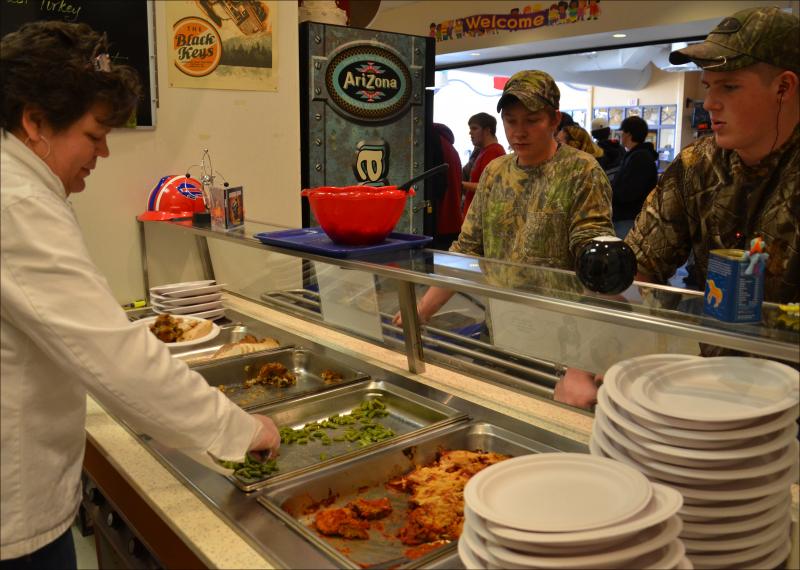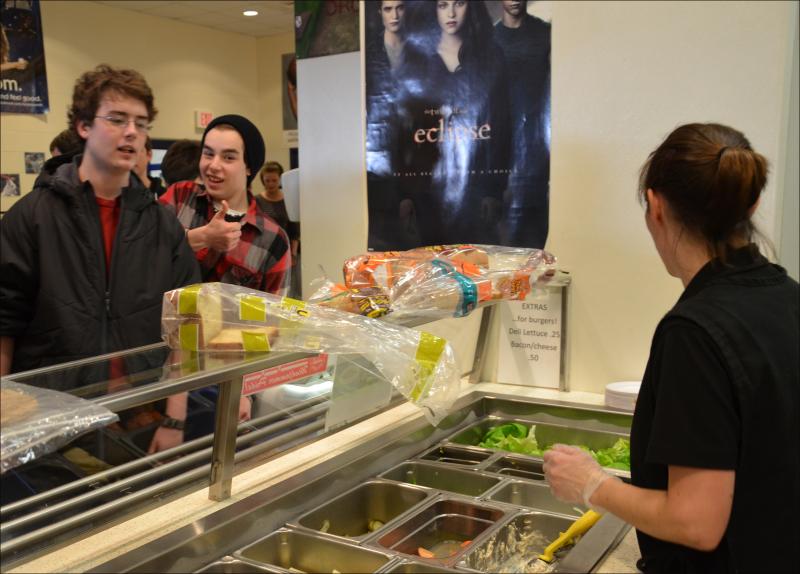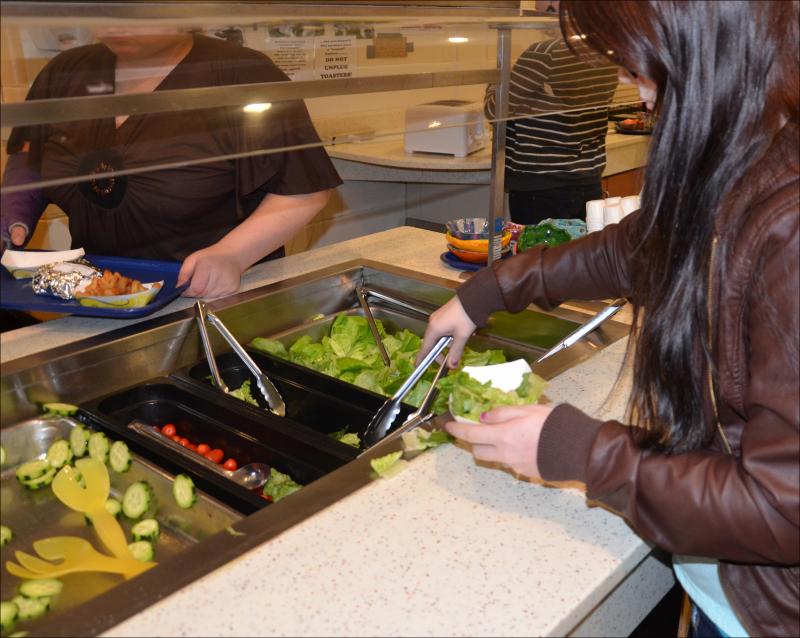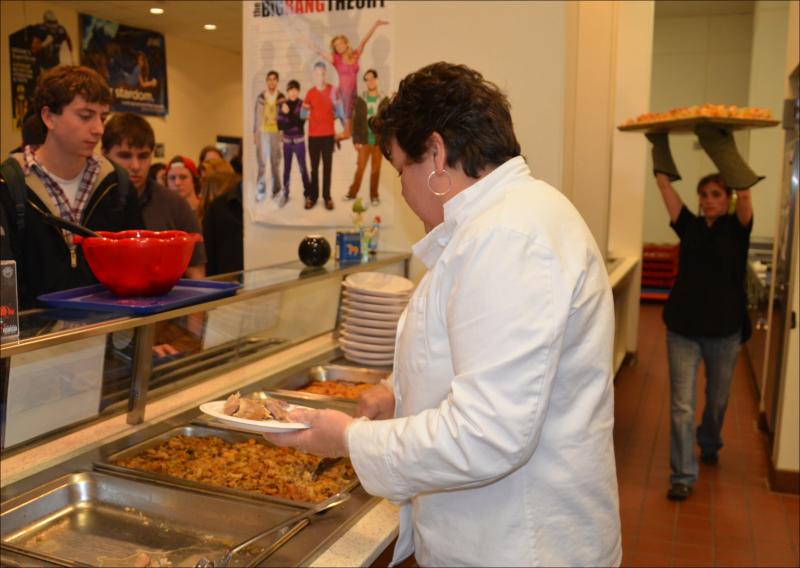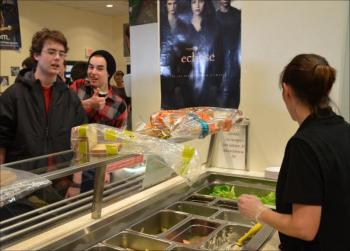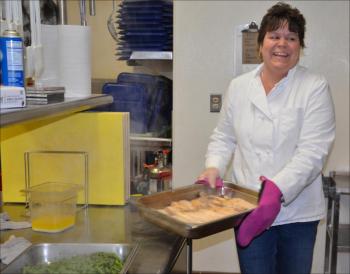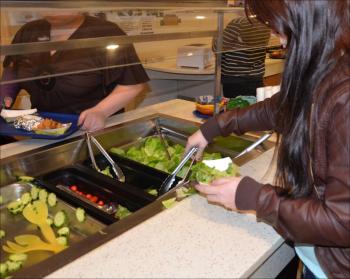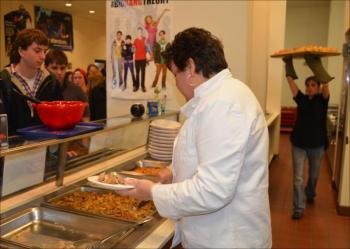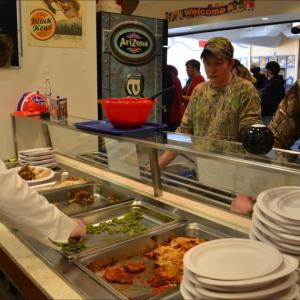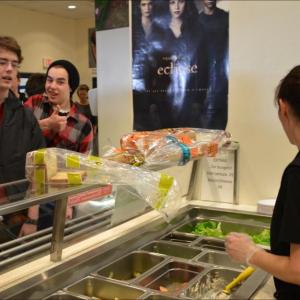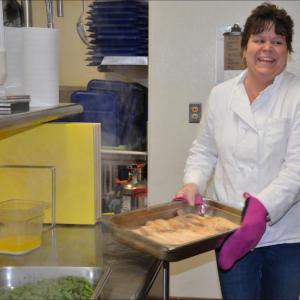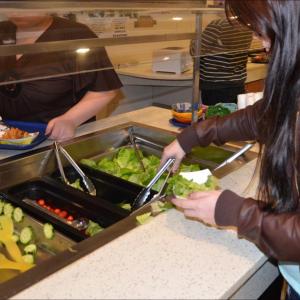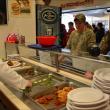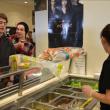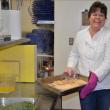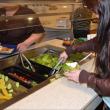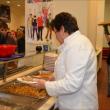From Belfast to Rockport, making local food connections work in schools
ROCKPORT — Across the nation, school districts are buying more local foods — recognizing that fresh, unprocessed items are healthier for students. According to the National Farm to School Network, more than 2,000 districts in 40 states are purchasing direct from local farmers, putting tax dollars back into the community. RSU 20 (in and around Belfast), Five Town CSD, and MSAD 28 (Camden/Rockport) are at the forefront of this trend—purchasing between 15 and 20 percent of school food from local producers.
Susan Boivin, Food Service Director at Camden Hills Regional High School, in Rockport, and School Administrative District 28 (Camden and Rockport, K-12), began local purchasing nine years ago, long before local foods were in the news. For her, it was a common-sense choice:
Last fall, Boivin overheard students telling each other to take the less polished looking apples because 'those are the real apples from Hope Orchard!'
“It’s important for kids to know where food comes from, and to dispel the myth that school lunch is terrible,” she said.
Having worked in restaurants and catering, Boivin couldn’t imagine being in rural Maine and not using foods like fresh blueberries and apples. Upon taking over the high school kitchen, she cleared the shelves of frozen diced eggs and liquid egg and ordered real local eggs.
Eventually Boivin began meeting with local farmers in the off-season to plan.
“We didn’t want to wipe them out with huge orders, or just become a repository for surplus food dumps," she said.
Then she got an offer she couldn’t refuse. Maine Coast Heritage Trust was starting to grow row crops at its Erickson Fields property near the high school, and gardeners there offered to donate free vegetables to the school district if Boivin would commit to buying an equivalent value of food from other local producers. Through that agreement that spanned several years, her local purchasing expanded. Among purchases this year were 100 pounds of blueberries from Beech Hill; 1,200 ears of fresh corn from Beveridge Farms; and more than 2,600 pounds of produce from MCHT’s Erickson Fields, including carrots, kale, swiss chard, squash, cucumbers, basil and eggplant.
Local buying is almost a game for Boivin now, whose irrepressible enthusiasm keeps her from being discouraged by budgetary constraints or USDA guidelines. She was able to stretch local root crops through November’s menu and hopes to start receiving produce soon from Northern Girl, a new purveyor of fresh and frozen farm produce grown in Aroostook County.
“I may only have to get one order of vegetables through our national supplier,” Boivin said, with a grin.
Pearly Martin, Food Service Director for Regional School Unit 20 (comprising Belfast, Searsport, Stockton Springs, Northport, Belmont, Frankfort, Morrill, Searsmont and Swanville), is getting strong support from the school board and a “Healthy Kids” parent group in what he calls their “new vision.” Martin hasn’t had difficulty incorporating local beef, poultry and vegetables into the district’s large lunch program (serving 2,500 students a day), and said now almost every day something on the menu is local.
“I’m enjoying the new challenge, though it’s been a huge process to have local foods increase from 1 percent to 17 percent of our food budget,” he said.
That’s $80,000 in tax dollars now going back into the local economy, he notes.
Both Martin and Boivin have gotten positive parental feedback but are concerned that many students still don’t know what’s local and don’t sample fruits and vegetables to taste the difference. Boivin has invited local farmers in to chat with students about their products and tries to have her cafeteria staff offer samples and “talk up” farm-fresh foods. It takes time, Boivin says, but she sees encouraging signs. This fall she overheard students telling each other to take the less polished looking apples because “those are the real apples from Hope Orchard!”
Event Date
Address
United States

